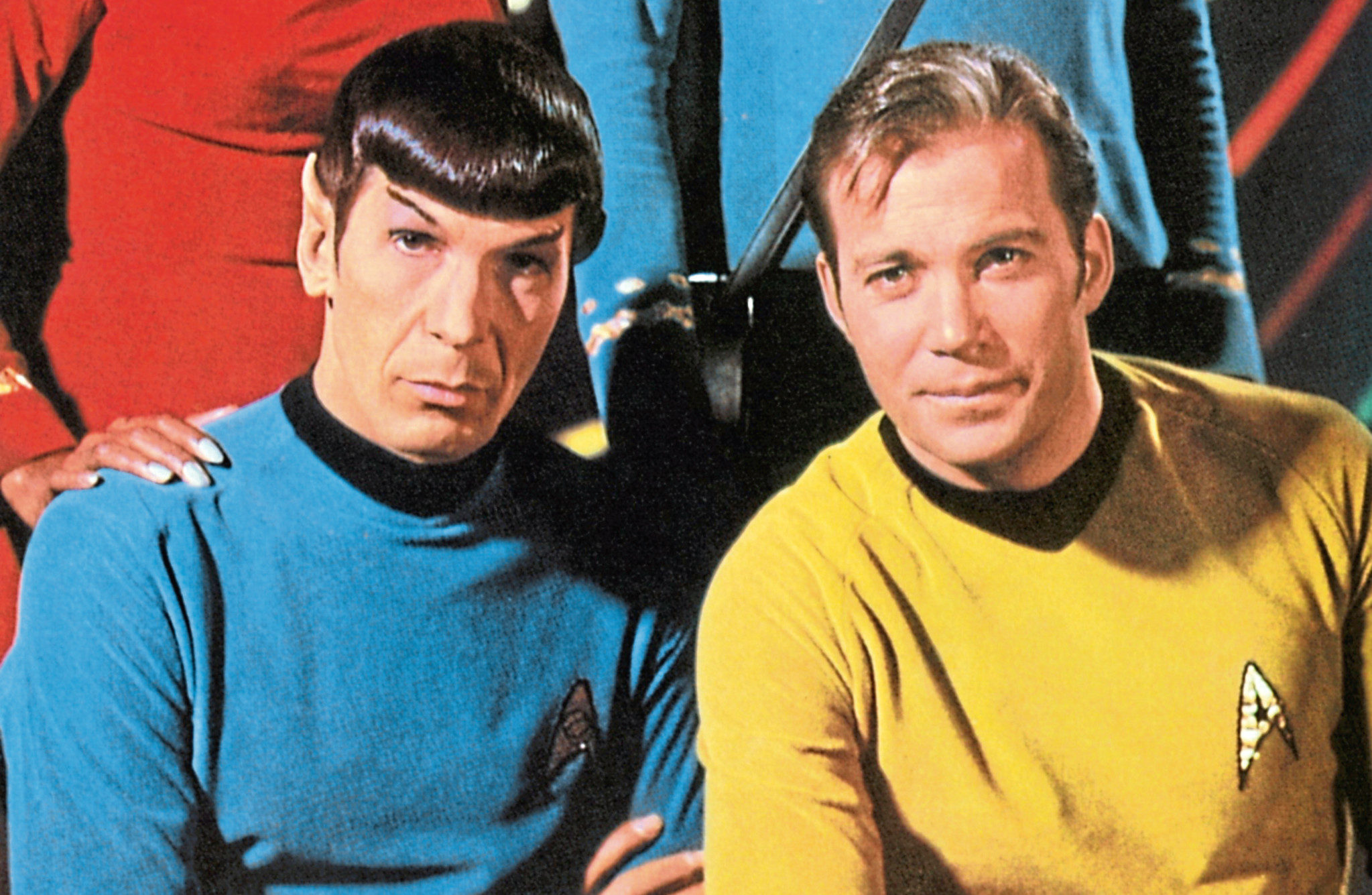
IT is half a century since Star Trek’s vast American audience witnessed a real first, but Trekkies have grown used to seeing it come up with brand new things.
November 1968 was the month that Captain Kirk and Lieutenant Uhura gave America its first televised interracial kiss.
Since then, some have pointed out that British TV featured interracial kisses as early as 1962 and 1964, and even Kirk kissed a Eurasian girl on an earlier Star Trek.
It does, however, demonstrate that in both the TV and cinema versions, Star Trek has never been afraid to literally go where no one has been before, and give us new things the world then goes on to imitate.
Gene Roddenberry, the genius who created the original Star Trek series, had been a bomber pilot in the Second World War and later a cop in Los Angeles, but he was always thinking about events that may take place much, much farther away. He sent his ideas to Desilu Studios, run by Desi Arnaz and Lucille Ball, and they loved it.
When they helped him turn his ideas about interplanetary battleships roaming the galaxy, remember that man still hadn’t been on the moon, so you could say Star Trek inspired even that!
Those kisses were important – many politicians would praise Star Trek’s multiracial cast, with Japanese-American George Takei, Uhura star Nichelle Nichols and others.
Believe it or not, Nichelle would later reveal that she had thought about quitting the series after one season, and it was none other than Dr Martin Luther King Jr who persuaded her to say.
Not only was he a huge fan of the show, he told her, but her very presence showed many African Americans that such roles were open to them, too. The presence of Nichelle in a prominent role was another important breakthrough by Star Trek.
Actress Whoopi Goldberg said that when she first saw her, she shouted to her mother: “Mama, there’s a black woman on television, and she ain’t no maid!”
Star Trek, of course, has also featured plenty of gadgets and gizmos that seem to have inspired real modern-day versions.
In Star Trek: The Next Generation, Captain Jean-Luc Picard would tell a machine to make him tea to his precise demands, and it would instantly do so. Today, we have 3D printing machines that can do likewise.
The early TV series also featured a metal canister that could miraculously translate many languages – well, we can now do that with apps on our smartphones and tablets.
Speaking of which, do you remember the Personal Access Data Devices, or PADDS? Well, clearly, the folks at Apple, Samsung and Microsoft did, because this Star Trek device looked just like today’s tablets.
Trekkies know that the Tricorder was used to detect anomalies in any new locale, and six years back a Canadian university student came up with a device that does exactly that in real life.
The Communicator Badge was worn on the left breast of Star Trek crew, and now hospital staff wear something suspiciously similar so they don’t have to use handheld pagers.
We never really had the fabulously fast Warp Drive explained in detail, but in recent years NASA has revealed that it could be on the way to devising something similar.
Captain Kirk and colleagues were never slow to use their phasers when faced with a persistent foe, and these stun guns were rather similar to things our police use today.
In the first Iraq War, some soldiers also used something called a dazzler, which directed energy at enemies. We think we know where they pinched that idea…
Less well-known is the hypospray which Bones, the Enterprise doctor, used instead of scary needles – its jet injection administered medicine right through the skin.
Today, those clever boffins at MIT, the Massachusetts Institute of Technology, reckon they have come up with a similar device, capable of delivering drugs through the skin at 340 metres per second.
Star Trek has also influenced how studios and TV channels go about their work. When NBC threatened to stop showing the series in 1968, they got the largest-ever number of letters from fans, begging them to keep it on-air.
Fan power managed to save it and keep their favourite show on American TV, and in the half-century since, fans have often resorted to bombarding shows with appeals to keep them on.
The show also demonstrated that just because you are a famous actor, that doesn’t necessarily mean you will automatically be good at singing, too.
If you need proof, just check out Spock – sorry, Leonard Nimoy – tackling I Walk The Line, Proud Mary and Everybody’s Talkin’ on his 1970 LP The New World Of Leonard Nimoy.
And if you have ever sat through William Shatner’s utterly bizarre version of Lucy In The Sky With Diamonds, you’ll know why both guys decided to stick to acting only. Undaunted, he has also tackled Bohemian Rhapsody, Total Eclipse Of The Heart and Space Oddity.
Not many TV series or films could get NASA to change the name of their space shuttles, but they did just that after a massive letter campaign by Trekkies, replacing the name Constitution with Enterprise.
George Lucas famously said that “Star Trek softened up the entertainment arena so that Star Wars could come along and stand on its shoulders”.
If those last few words suggest he thought his films were superior, it was quite an incendiary opinion.
Star Trek fanatics and Star Wars fanatics, the Celtic and Rangers supporters of the cinema world, really don’t see eye to eye!

Enjoy the convenience of having The Sunday Post delivered as a digital ePaper straight to your smartphone, tablet or computer.
Subscribe for only £5.49 a month and enjoy all the benefits of the printed paper as a digital replica.
Subscribe